PolyMax PETG – ESD – 500 g – black – POLYMAKER
PolyMax™ PETG-ESD is a durable electrostatic dissipative filament suitable for printing housings, jigs and fixtures in the electronics industry.
- Safe from electrostatic discharge Polymaker PETG.
- Reinforced strength to offer superior impact strength compared to PolyLite™ PLA and PETG.
- Carbon nanotubes (CNT) improve the hardness and tensile strength (X-Y) compared to PolyMax™ PETG.
- Excellent thermal properties, up to 76℃(HDT 0.45MPa)/86℃ Vikat softening temperature.
- Cardboard reel and packaging (made of 100% recycled cardboard)
Features
- Electrostatic discharge safety – PolyMax™ PETG-ESD combines electrostatic discharge (ESD) safety with the versatile properties of PolyMax™ PETG: printability, heat resistance, durability and strength. PolyMax™ PETG-ESD can be used for a wide range of applications in the electronics industry for jigs and fixtures, functional prototyping, electronic enclosures.
- Superior strength – an excellent choice for engineering applications, Polymaker has introduced its nano-reinforcement technology, which is contained in all PolyMax™ materials. This increases the fracture toughness of the ESD material and creates an ESD-safe PETG filament that can still be used in demanding applications. This industrial PETG ESD filament is ideal for applications such as housings, enclosures, jigs and fixtures where strength and electrostatic discharge (ESD) protection is required.
- Heat Resistant – PolyMax™ PETG-ESD offers fantastic thermal properties with a heat deflection temperature of 76°C (0.45 MPa) and a Vicat softening temperature of 86°C; suitable for a wide range of practical applications.
- Surface Quality – PolyMax™ PETG-ESD prints production fixtures and functional parts with excellent surface quality. This is achieved in part due to the high fluidity of the PETG and CNT filament.
- Uncompromising Quality – Polymakers’ industry-leading quality control process and rigorous in-house testing ensures reliable printing and consistency across all spools and batches.
PolyMax™ PETG-ESD is a popular electrostatic dissipative filament of choice for 3D printing of mounting fixtures, custom anti-static trays or electronic enclosures, as well as custom 3D printing solutions for hobby electronic designs.
Electrostatic dissipative (ESD) materials are plastics that reduce static electricity in order to protect electrostatic electricity sensitive devices. The demand for ESD properties is strong in the manufacturing and prototyping sector. Prototyping applications are typically related to enclosures and, in the manufacturing sector, jigs, fixtures and assembly or production tools for factory lines requiring antistatic materials.
PolyMax™ PETG-ESD is formulated with carbon nanotubes that allow it to dissipate electrostatic charges due to its very low surface resistivity. Combined with a durability and thermal runaway temperature of 76°C, PolyMax™ PETG-ESD is a reliable choice for the production of electronics manufacturing aids.
One example of a custom solution that is possible with additive manufacturing and PolyMax™ PETG-ESD is a custom connector for FFC (flexible flat cable). FFCs are connection structures that are commonly used in electronic devices, in this example a motion control company needed a non-standard connector to connect rotary motors and optoelectronic switching devices. Three-dimensional printing made it possible to produce complex geometry that would have been difficult to produce through traditional machining, and bypassed MOQs and unstable lead times.
The connector, printed from PolyMax™ PETG-ESD, is designed in two parts and once assembled can hold the FFC securely inside, and its ends are connected to the rotary motor and other electrical components. The rotary motor drives the continuous rotation of the FFC, while the connector allows separation and rotation. The design also includes stop slots to prevent the cable from tangling or breaking. Once the parts are printed the same day, the customer can proceed immediately to a trial installation.
Given that the FFC ribbon cable will experience continuous friction as it rotates with the rotating motor, the material selection for the connector must be wear resistant while providing protective properties. In addition, electronic components require ESD-safe characteristics. PolyMax™ PETG ESD from Polymaker is becoming the ideal choice for the material used in the manufacture of these parts and reduces costs by 85% compared to machining aluminum.
Settings when printing
| Nozzle temperature | 250°C – 290°C
Wear resistant nozzle recommended.
|
|---|---|
| Pad temperature | 70°C – 80°C |
| Substrate material | Works well with most building surfaces, e.g. glass, BuildTak®, etc. Rigid build plates are recommended over magnetic flexible plates. |
| Treatment of the substrate | Apply EcoFixy, Magigoo Original or PVA adhesive to the build surface to improve bonding. |
| Cooling fan | LOW for better surface quality OFF for better strength |
| Print speed | 30 mm/s – 50 mm/s |
| Retraction | Ideal retraction settings vary from printer to printer and depend on the hot end. The following settings are a good starting point for many machines. Direct drive: 1 mm retraction distance at 20 mm/s retraction speed Bowden: 3 mm retraction distance at 40 mm/s retraction speed |
| Fill/Minimum wall thickness | Due to the presence of dispersed CNTs (carbon nanotubes) in PETG ESD, we recommend printing a pattern with a higher fill density and a minimum wall thickness of 1.5mm for better interlayer bonding quality and ESD properties. |
| Inclogger | Recommended for moderate size models or cold/unstable printing environments. |
| Recommended support material | Single extrusion: Self-support. |
Based on a 0.4 mm nozzle. Printing conditions can vary between printers and nozzle diameters.
We recommend that you use a wear resistant nozzle when printing on PolyMax™ PETG-ESD. The CNT additives in ESD filaments are abrasive to printer components and will wear the brass nozzle or brass extruder gear faster than traditional materials.
PETG is a “sticky” material compared to regular PLA. When it comes to printing PETG without filaments or droplets, it is recommended to keep the filament dry and adjust temperatures, retraction, speeds and flow to avoid excess material build-up on the nozzle.
For other printing tips on PolyMax™ PETG-ESD contact us!
Specifications
| Net weight: | 500г |
|---|---|
| Type of material: | ESD-PETG (CNT-filled) |
| Density: | 1.24 (g/cm3 at 21.5˚C) |
| Colour: | Black |
Compatibility
PolyMax™ PETG-ESD has been developed with compatibility in mind to print excellently on a wide range of 3D printers equipped with a heated bed. PolyMax™ PETG-ESD, like other materials, is hygroscopic. This means that it is susceptible to absorbing moisture from the atmosphere, which can subsequently affect the quality and mechanical properties of the final prints. See “Storage and Drying” details below for instructions on protecting PolyMax™ PETG-ESD.
CNT in ESD materials are abrasive, we recommend customers first install a more abrasion resistant nozzle before printing with this filament. Reinforced fibers are typically stiffer and more brittle than other standard fibers. It is recommended to take extra care and make sure your filament guiding system is smooth and with minimal bends to avoid filament breakage.
Of course, with thousands of unique 3D printer models on the market, we can’t guarantee that every filament type will work with every 3D printer.
Technical data
All test specimens were printed under the following conditions: Nozzle temperature = 270˚C, build plate temperature = 80˚C, leachate = 100%, cooling fan = OFF
All specimens were conditioned at room temperature for 24 hours prior to testing.
ESD properties
| Surface resistance (Ω) | Nozzle temperature |
|||
|---|---|---|---|---|
| 250°C | 270°C | 290°C | ||
| Type of specimen | 0° | (1.6 ± 0.3)E+7 | (4.7 ± 0.8)E+5 | <1E+4 |
| 45° | (7.0 ± 0.9)E+6 | (3.4 ± 1.2)E+5 | <1E+4 | |
| 90° | (8.8 ± 0.8)E+6 | (3.2 ± 1.0)E+5 | <1E+4 | |
Ensure that the PETG-ESD parts are properly grounded to prevent damage to components with which they may come into contact. Use materials such as ESD mats or grounding cables to allow static charges to dissipate safely.
Thermal properties
| Value | Method of testing |
|
| Glass transition: | 77°C | DSC, 10°C/min. |
| Heat deflection temperature: | 0.45MPa – 76°C 1.8 MPa – 72°CHDT Curve |
ISO 75 |
| Vicat softening temperature | 86°C | ISO 306, GB/T 1633 |
Mechanical properties
| Value | Method of testing |
|
| Jung’s module (X-Y) |
1983 ± 66 MPa | ISO 527, GB/T 1040 |
| Tensile strength (X-Y) |
36.1 ± 0.7 MPa | ISO 527, GB/T 1040 |
| Bending force (X-Y) |
54.0 ± 3.0 MPa | ISO 178, GB/T 9341 |
| Sharpie impact strength (X-Y) |
5.7 ± 0.6 kJ/m2 | ISO 179, GB/T 1043 |
The typical values presented in the Polymaker data sheet are for reference and comparison only. Due to the nature of 3D printing, they should not be used for design specification or quality control purposes.
Storage and drying
Before packaging, PolyMax™ PETG-ESD is dried to ensure the best print quality and the filaments are vacuum sealed to protect them from moisture. When not in use, PolyMax™ PETG-ESD should be stored away from sunlight in the packaged resealable bag.
Like other PETG filaments, PolyMax™ PETG-ESD is susceptible to moisture absorption from the air, which can subsequently affect the quality and mechanical properties of the final prints. We recommend that PolyMax™ PETG be stored in a PolyBox™ or in a dry cabinet during printing to prevent moisture absorption, which will reduce print quality. PolyBox™ stores the filament under dry conditions (relative humidity 15% or less).
If you hear popping sounds and notice that the surface quality of your print is uneven or the color is not consistent, this is a likely indicator that the filament has absorbed too much moisture. PolyMax™ PETG-ESD spools can be dried in a preheated convection oven at 65˚C for up to 6 hours. Results may vary depending on the accuracy of your oven, so please use caution.
Frequently Asked Questions
Q: Do I need to rewind this thread if I want to use it with another spool?
A: We strongly recommend not to interfere with the product by rewinding. All Polymaker filaments are wound with tension but without strain. Rewinding completely rearranges the curvature of the coil and this tension over time can cause most plastics to catastrophically break. If for some reason your printer is blocked from mounting smaller than standard size spools, there may be safe print adapters or external mounting solutions available.
Don’t know where to start? Or which thread would be right for your application? We have a wide range of support options, including phone support. Contact us today!
Polymaker is an international team that is passionate about 3D printing. They produce the finest 3D printing materials, controlling every stage of production. With a diverse portfolio of materials ranging from high-performance plastics to unique aesthetic solutions, Polymaker will continue to add cutting-edge materials to their ever-growing portfolio.
At the heart of Polymaker is their research and development lab, where all Polymaker materials are formulated and refined from scratch to create best-in-class 3D printing materials. Their precision testing equipment combines the latest advances in technology to ensure they are ahead of the game.
PolyMax™ PETG, like all other Polymaker materials, is manufactured using state-of-the-art polymer processing technology and equipment. Polymaker’s stringent quality control processes ensure industry standards of reliability for consistent customer service.
Tolerance – Polymakers’ custom-developed extrusion, control and monitoring solutions ensure that filament tolerance and roundness meet Polymakers’ stringent quality standards.
Reliable mechanical, coloring and printing properties – Each batch of filament products is tested to ensure that all quality specifications (melt flow, softening point, mechanical, diameter, roundness) are met.
Drying and Vacuum Sealing – Prior to packaging, all Polymaker filaments are dried to a < 0.1% moisture level to ensure the best print quality, and vacuum sealed to protect the filaments from moisture. All vacuum packed products are allowed to sit for 24 hours before being boxed to ensure they do not leak.
PolyMax™ PETG is spooled on 750-gram Polymaker cardboard spools made from recycled cardboard. The cutout and weight gauge on the side of the spool make it easy to see exactly how much filament is left for your next printing project. PolyMax™ PETG’s recycled cardboard packaging and cardboard spool are the first step taken towards creating more environmentally sustainable products. The spool is packaged in a vacuum-sealable bag to ensure your filament doesn’t get wet. Like all other PETG filaments, PolyMax™ PETG is hygroscopic, so we recommend that you keep this bag for storing your filaments.


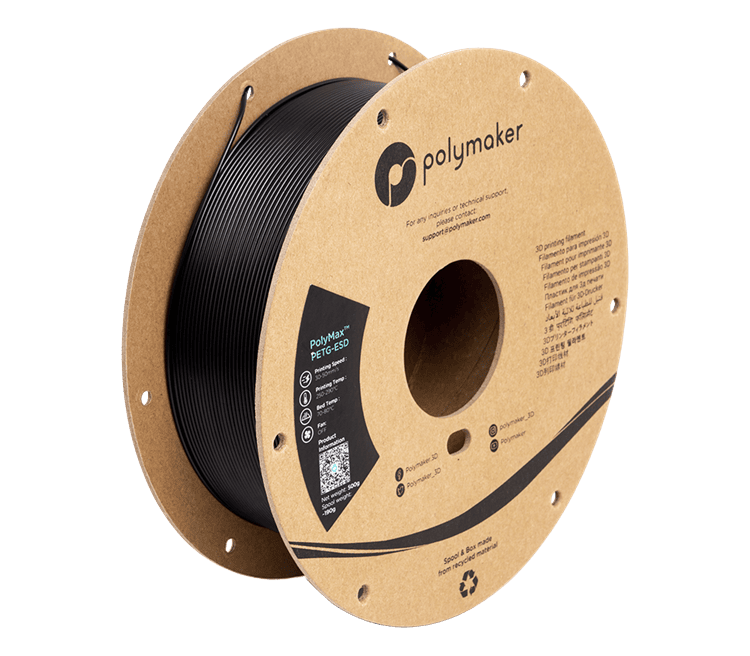
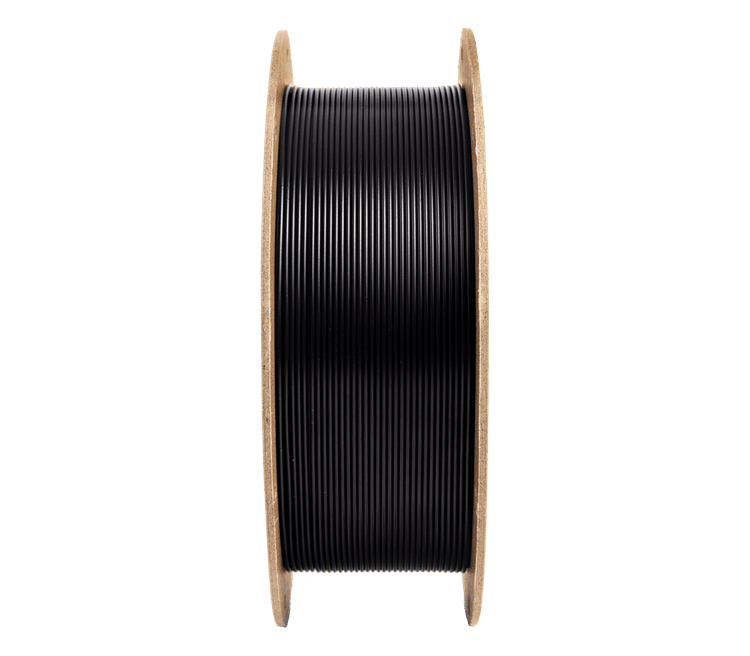
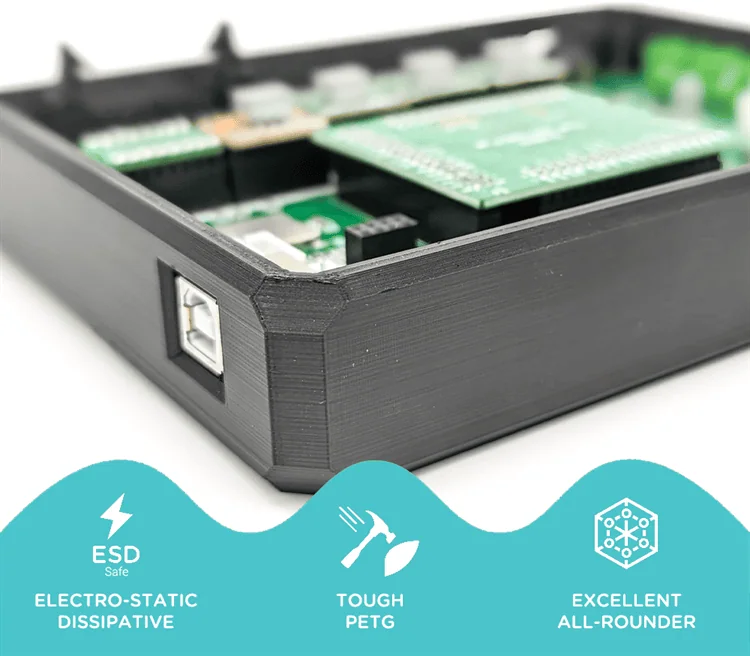
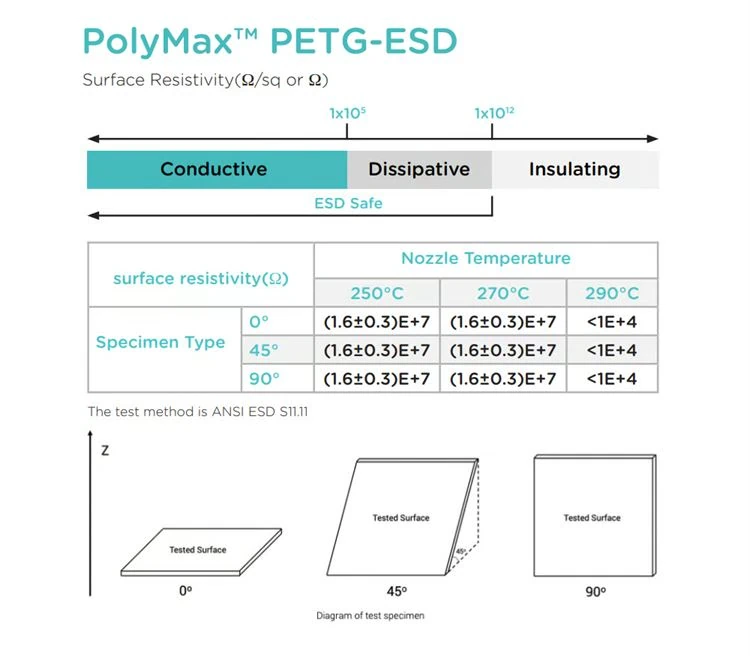
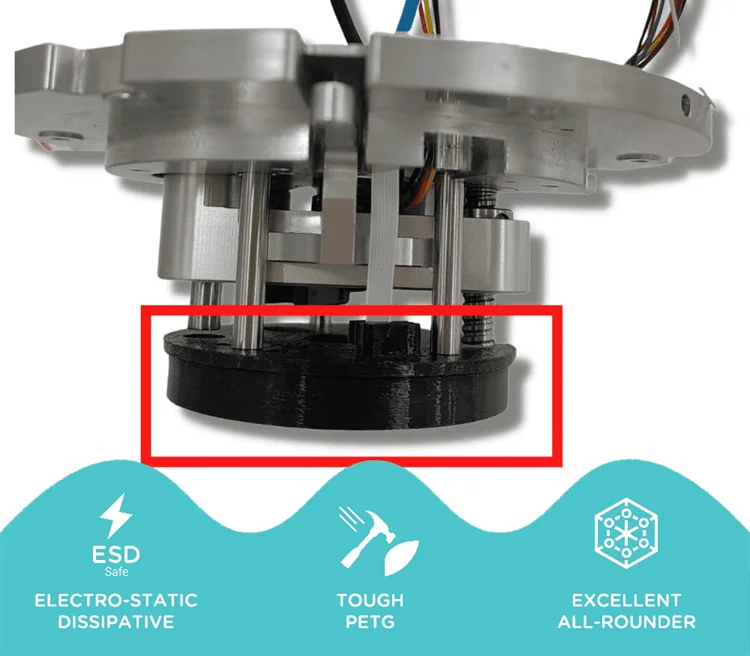
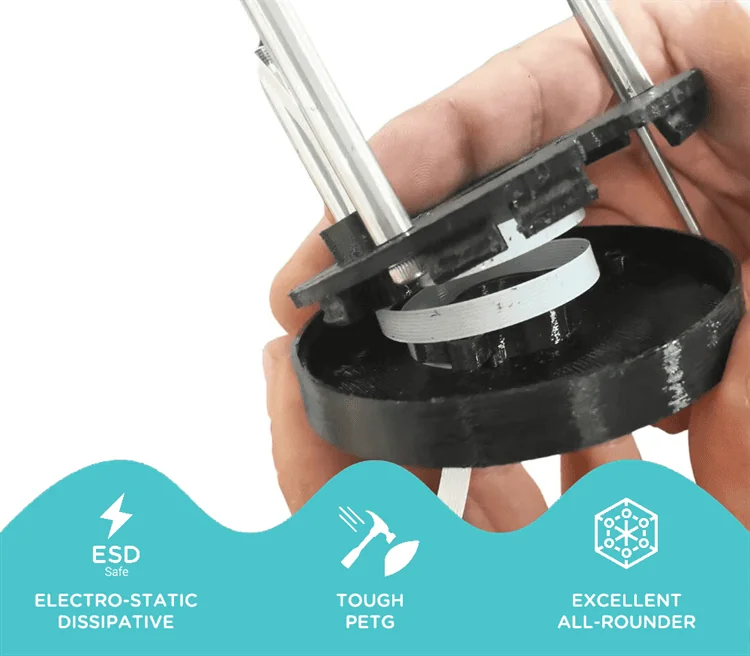
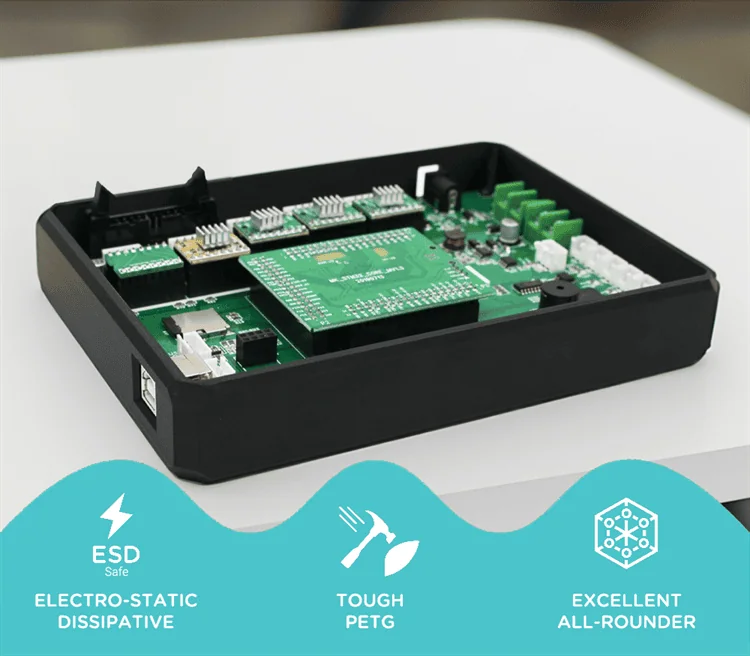
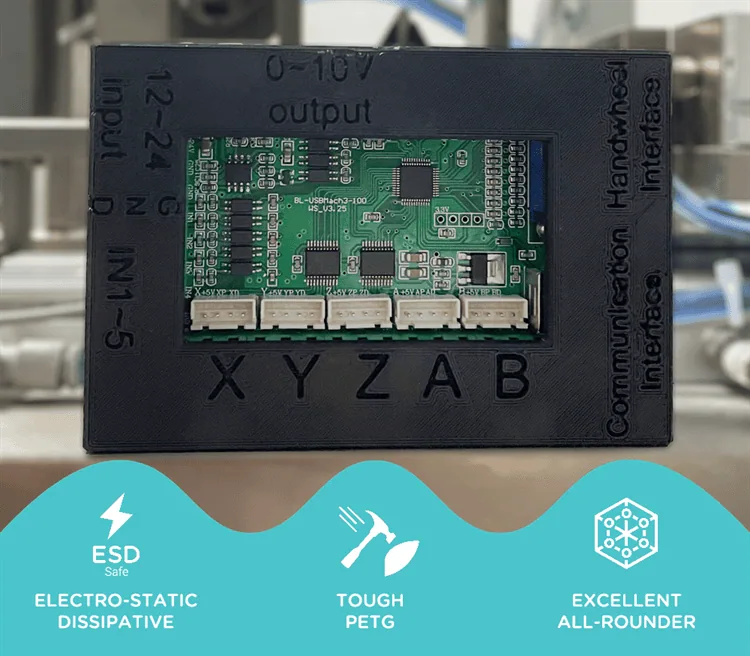
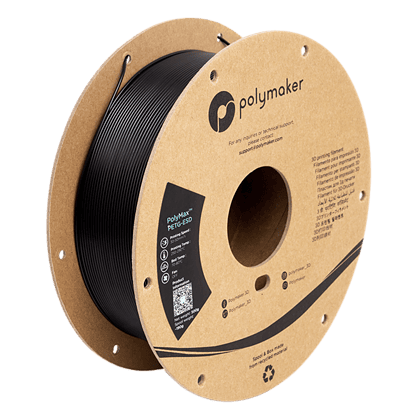
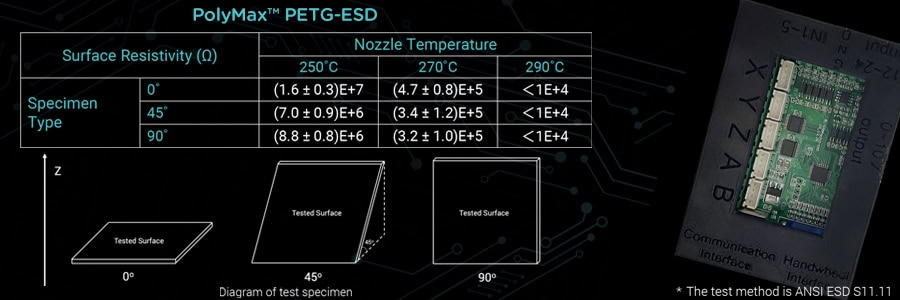














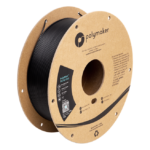

There are no reviews yet.